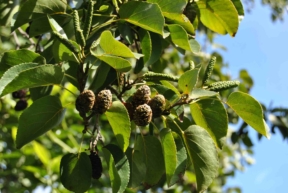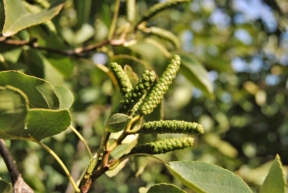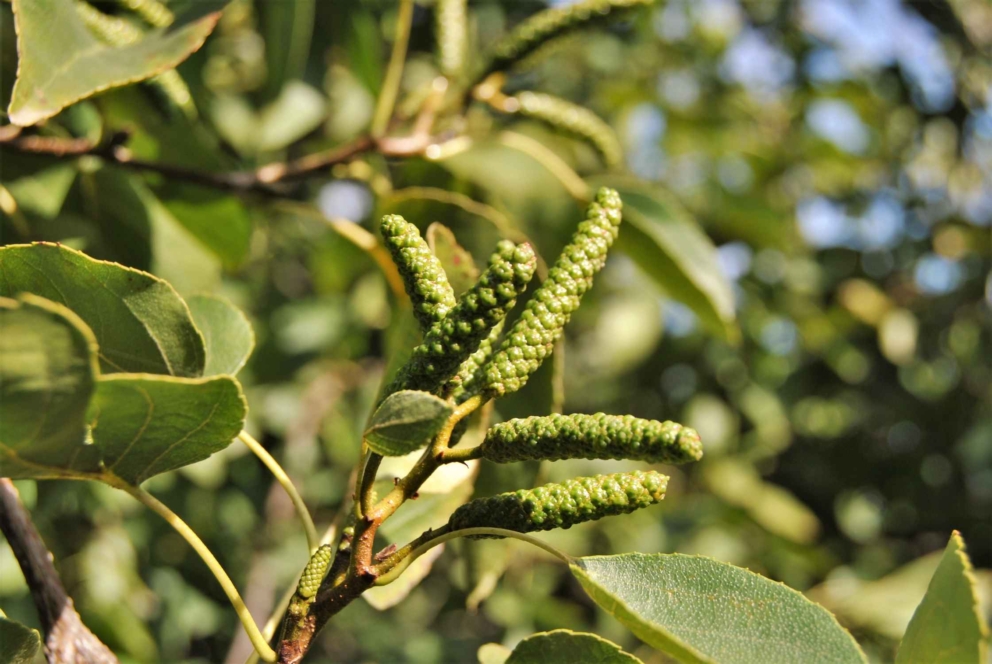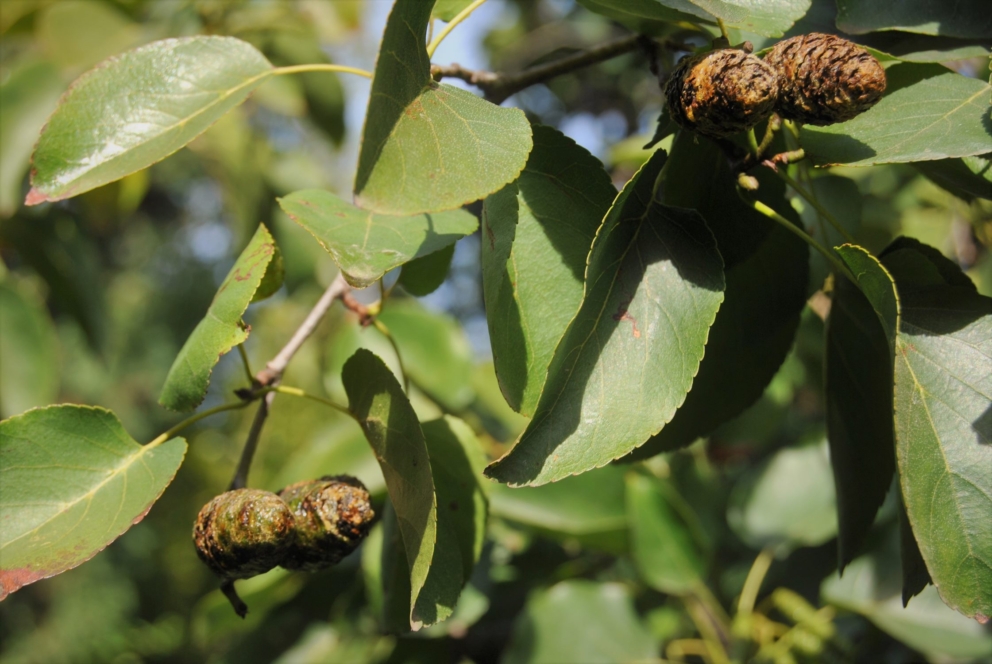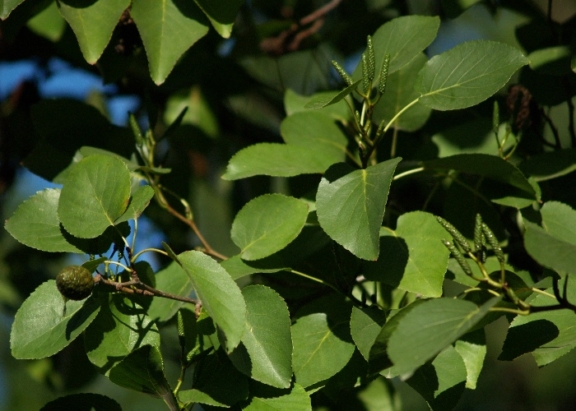
Italian Alder
Alnus cordata
Family and description
From the Alnus genus, Betulaceae family, this Alder is a deciduous tree that can grow up to a height of up to 20 m.
It has a conical crown and a greyish-brown trunk that is smooth or slightly vertically bifurcated.
The leaves are heart-shaped (cordiform), with a serrated margin, about 4 to 10 cm long, with 6 to 8 veins covered by an indumentum. The top page of the leaf is darker and glossier than the bottom one.
Flowering occurs between February and March. The pendant male flowers, green when young and brown when adults, solitary or in groups, are a characteristic element of this species.
The fruit is a small pinecone and appears in autumn. It is brownish-green in colour, ovoid-shaped, 2.5 cm long and 1.5 cm wide. The seeds are winged and are dispersed during the winter.
Origin and habitat
The Italian Alder is, as the name suggests, native to southern Italy and Corsica.
In Portugal it is used for ornamental purposes in public spaces or planted on the edges of highways.
This Alder tolerates dryness, direct sunlight and sea winds. It is not very demanding in terms of soils but prefers acidic ones with a loamy or clayey texture. The species appears more frequently in areas of up to 1300 m altitude.
Uses and curiosities
The Italian Alder is a fast-growing species that is propagated by cuttings or seeding.
Due to its resistance, this species is used in places of difficult conditions. It is also used in landscaping, in the composition of subdivision hedges.
